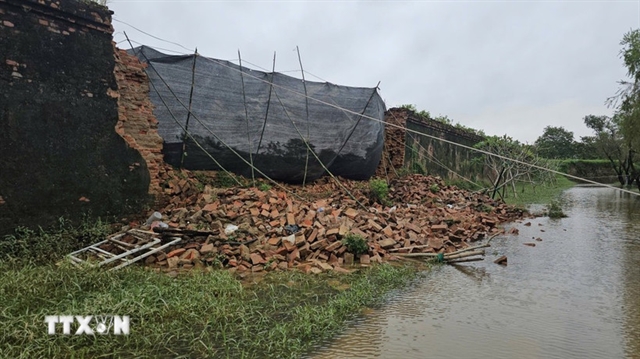 Society
Society


|
| A prolonged dry season and El Niño phenomena caused the water level of Trị An hydropower reservoir to drop to "dead level". — Photo danviet.vn |
ĐỒNG NAI — The water level of Trị An hydropower reservoir, the largest of its kind in the southern region, has dropped to “dead level” due to a prolonged dry season and El Niño phenomena.
Võ Tấn Nhẫn, director of the Trị An Hydropower Company, said that the reservoir’s water level has decreased deeply, approaching the dead level of 50 metres.
Specifically, the water level measured on May 7 was only 50.5 metres. It’s the lowest water level measured in more than 12 years.
According to Nhẫn, the water volume was low due to the prolonged dry season, but thanks to the inter-reservoir operation mechanism, the plant has still been operating all four turbines.
He noted that in normal conditions, the hydropower plant has an output of 9.6 million kWh. However, the plant currently only produces about two million kWh, only about 20 per cent of its peak capacity.
Previously, in September 2010, the water level of the Trị An reservoir dropped to 49.99m, lower than the dead water level, forcing the plant to alternately operate its turbines.
The water level is expected to increase by the end of May when the rainy season comes.
The Trị An hydropower plant was built on Đồng Nai River which flows through Vĩnh Cửu District, Đồng Nai Province, 65km northeast of HCM City.
The plant was built with the financial and technological support of the Soviet Union since 1984, and inaugurated in 1991. It has four turbines with a total designed capacity of 400MW and annual electricity output of 1.76 billion kWh.
Besides contributing to the national grid, the project has also helped to reduce salinity and regulate floods for downstream areas and provide water for daily life and production for millions of people in Đồng Nai and Bình Dương provinces and HCM City. — VNS




